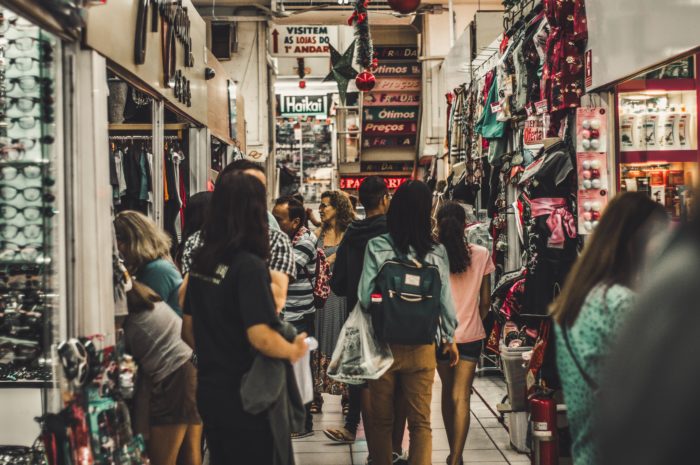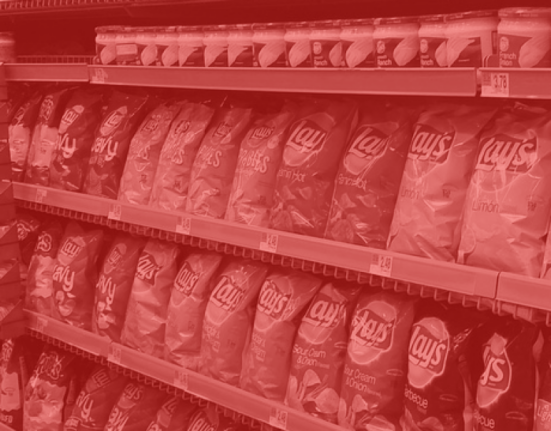Retail store operators are typically responsible for driving a wide range of KPIs related to their individual stores. A successful store operation involves marketing, sales, customer experience, supply chain and inventory management, and operations management.
In this article, we’ll look at some key metrics that store operators need to track to be successful across all of those areas.
What Are KPIs in Retail?
KPI stands for Key Performance Indicator. A KPI is a metric that measures the performance of specific business activities. Declining or stagnant KPIs are usually an indicator that some part of your company is not performing as it should. Every functional area of a retail business will have its own KPIs, and every business will have KPIs that are more important than others.
For example, a retailer who is struggling with inventory management would want to put more emphasis on improving those KPIs. A retailer seeing declining foot traffic needs to focus on marketing and customer experience KPIs. Mapping KPIs to functional areas is a great way to ensure every part of the business is focused on what matters for success.
Declining or stagnant KPIs are usually an indicator that some part of your company is not performing as it should.
7 KPIs Store Operators Need to Track
It’s impossible to give a comprehensive list of KPIs that every retail store should be tracking. Choosing the right KPIs to measure is about understanding the specific purpose each one serves, how each KPI can be measured qualitatively or quantitatively, what timeframe is relevant for reporting on each KPI, and how the metrics map to wider strategic goals.
That said, here are some of the most important retail KPIs that nearly every operation needs to keep an eye on.
1. Conversion Rate
Conversion rates are calculated by taking the number of sales made and dividing it by the total number of shoppers who came into your store.
Conversion rates are important to measure because it gives you a sense of how good you are at turning shoppers into buyers. Foot traffic means nothing if too few people are buying anything.
How it helps you improve: If you’re finding that conversion rates are dropping, it could be a good opportunity to check in on the visual merchandising aspects of your store. Do your window displays need improvement? Are your stores clean? Are the products displayed in an appealing way? All of these impact conversion rates. As you make changes to your operation, see how your conversion rate changes to understand how different actions drive results.
Beyond the visual, conversion rates can also be impacted by pricing. If shoppers know they can get better pricing for similar items elsewhere, they may do little else but window shop at your locations. Low conversion rates should prompt you to use a price intelligence tool to ensure you’re not getting beaten by competitors who are offering more appealing prices for your target customers.

2. Sales Per Square Foot
Sales per square foot can be calculated by taking your net sales and dividing it by the square footage of your sales space.
This is a great metric to determine the productivity of your store. It tells you how well your space is optimized and how much ROI you’re getting on your physical space. Note that sales space does not include non-customer focused areas, such as storage, restrooms, or employee break rooms.
How it helps you improve: Weak sales per square foot can have a number of different culprits. One of the most obvious is your store layout. Visual merchandising is all about displaying your products and designing your stores in a way that presents your product assortment in the most appealing way possible. Weak visual merchandising means you aren’t getting the most out of your sales space.
Your product assortment can also impact sales per square foot. Assortment planning is crucial for making sure you have the products your customers actually want.
Making sure your employees are also able to cover the sales floor and help customers make the right decisions for them can also improve sales per square foot. And it brings us to the next key metric.
3. Sales Per Employee
Sales per employee is calculated by taking your net sales and dividing it by the number of employees staffed at your stores.
This is critical information to have when determining staffing levels on a shift-by-shift basis, as well as overall staffing. It also shows you who your top performers are, who needs extra training, and the overall effectiveness of your sales staff.
How it helps you improve: Low sales per employee can be indicative of a few things. It could mean you have too many people working the floor, and need to reduce headcount. It could also mean that you need to train your sales team more. With so many choices for consumers, a helpful sales staff can be a key differentiator that drives revenue and improves your customer retention rate.
4. Average Basket Size
Average basket size is the total units sold divided by the number of transactions made. For retailers that depend on volume, average basket size is a critical metric. Each transaction should result in multiple items being sold, otherwise, you may find other lagging indicators like net profit or profit margin are not where you want them to be.
Keep in mind that this is different from “average transaction size,” which is also an important metric that shows you total revenue divided by the number of transactions. Both are key metrics, but should not be confused.
How it helps you improve: Your average basket size can give you a few hints about where you need to improve. In some cases, it could mean bundling certain products to entice customers to buy multiple items when they come to your store. Point-of-sale promotions can also lend themselves to driving impulse buys, thereby growing your basket sizes.
In other cases, improving sales staff training could help increase basket size. By providing personalized service, customers can see how different items can come together. For example, if someone comes in to buy a new winter jacket, an attentive salesperson can show them how to complete the look with a hat and scarf.
5. Foot Traffic
Foot traffic is simply the total number of store entrances you see over a given timeframe. Whether you’re tracking it on a weekly, monthly, or quarterly cadence, store foot traffic is an important KPI because it reflects your marketing efforts in the geographic area around your store.
How it helps you improve: Understanding patterns in foot traffic can give you a few indicators about the health of your business. Tracking foot traffic over time can show you seasonal shopping patterns, which are vital when diagnosing why foot traffic is improving or declining. If foot traffic increases or decreases at specific times of the year, you may be dealing with seasonality rather than good or poor performance. It could also show the impact of new competition in your area.
Moreover, foot traffic is one KPI that gives you insight into how well your brand is performing in a given geographic location. Declining foot traffic could mean that you need to focus promotional efforts in an area. Use your email list, social and traditional advertising, and field marketing to target shoppers in an area of declining foot traffic and give them a reason to get back into their local stores.

6. Gross Margins Return on Investment
Gross margins return on investment, or GMROI, is a metric that shows if a desirable gross margin is made on the inventory purchased. You can determine GMROI by looking at your gross margin and dividing it by your average inventory cost. This will tell you how much you’re making off every dollar you invest in inventory.
How it helps you improve: Looking at GMROI gives you a way to find how you can get more out of your investment in inventory. Weak GMROI is a signal that your product assortment isn’t selling the way you expect it to, leading to markdowns.
Additionally, it’s one data point that can support a move to increase your prices or find ways to lower the cost of goods sold. If you aren’t turning over inventory at a fast enough rate, it could mean that you aren’t using markdowns strategically, or your pricing needs a second look.
7. Shrinkage
Measuring growth metrics is important, but keeping costs low is equally critical for long-term profitability. Shrinkage simply refers to lost or phantom inventory, whether it’s due to theft, accounting errors, or supplier fraud. All of these contribute to higher costs.
You can calculate shrinkage by taking the value of your inventory at the end of a given time period and subtracting the value of the inventory you physically count.
How it helps you improve: Keeping costs low is half the battle when it comes to turning a profit. If you’re noticing that shrinkage is spiraling out of control, don’t panic. There are a few things you can do.
First is improving your procedures around tracking inventory. Be sure that whoever is in charge of counting inventory has someone else to double-check their numbers. Supervise the point-of-sale experience to ensure employees are not giving things away. It’s also worth using a modern POS that can prevent common errors. Audit your suppliers constantly to be sure you’re always getting what was promised.
There’s no shortage of tools to use to measure the performance of your retail store. Store operators have a major responsibility on the frontlines, dealing with customers every day. Tracking your KPIs closely can help you fix what’s not working and prove your value on the things that are.
Editor’s Note: This post was originally written and published in March 2018 by Angelica Valentine and has since been updated and refreshed for readability and accuracy.















3 Comments